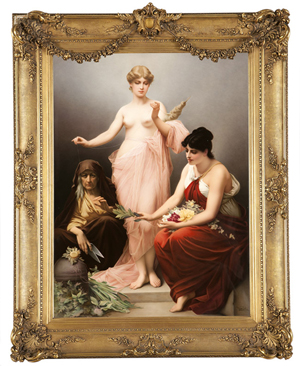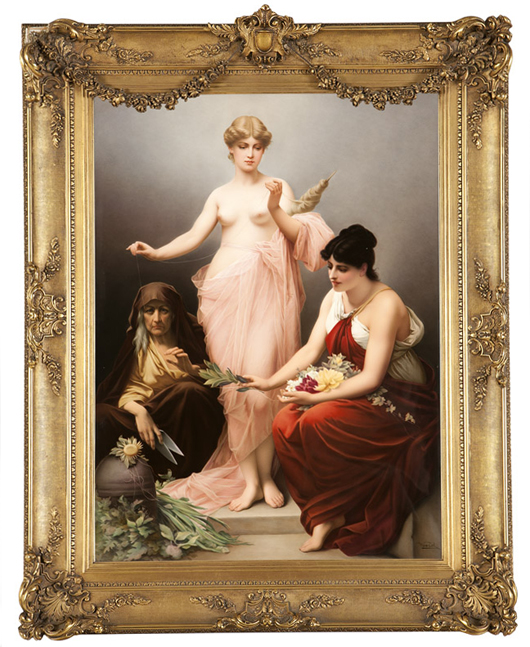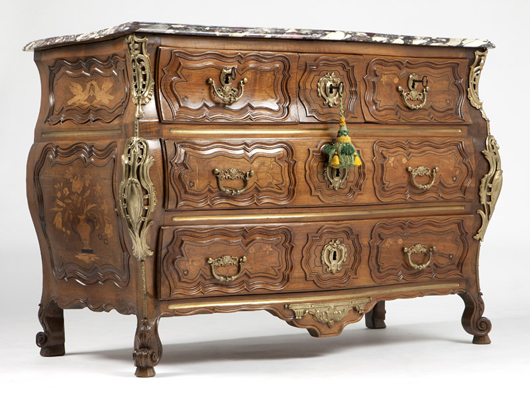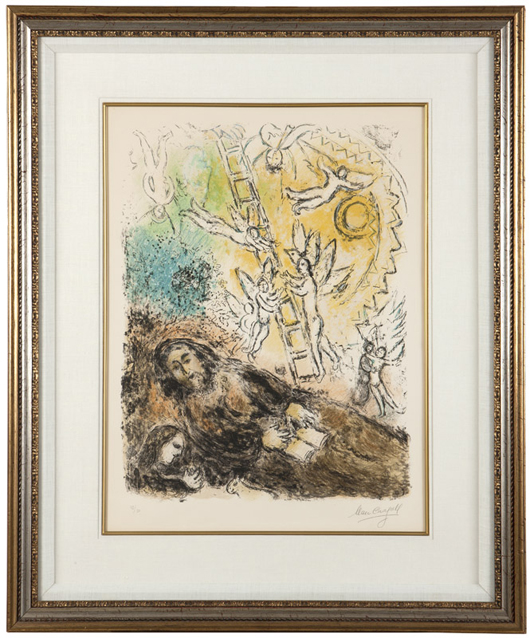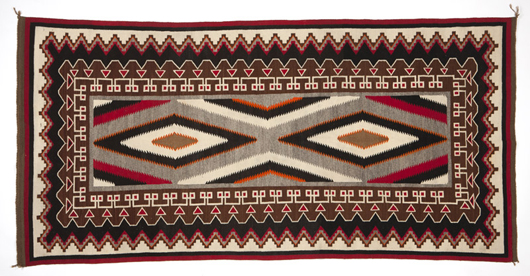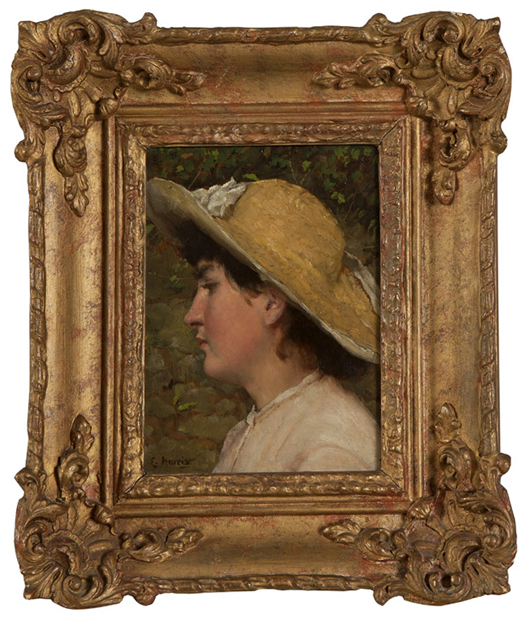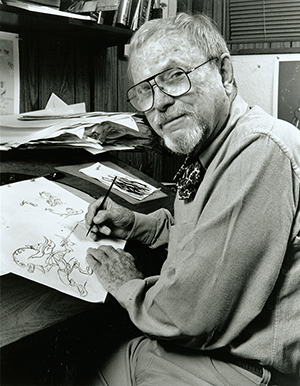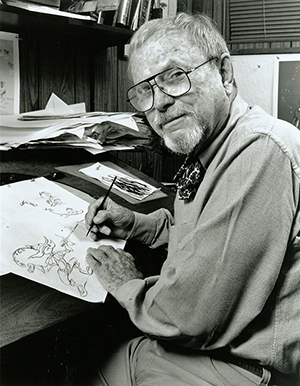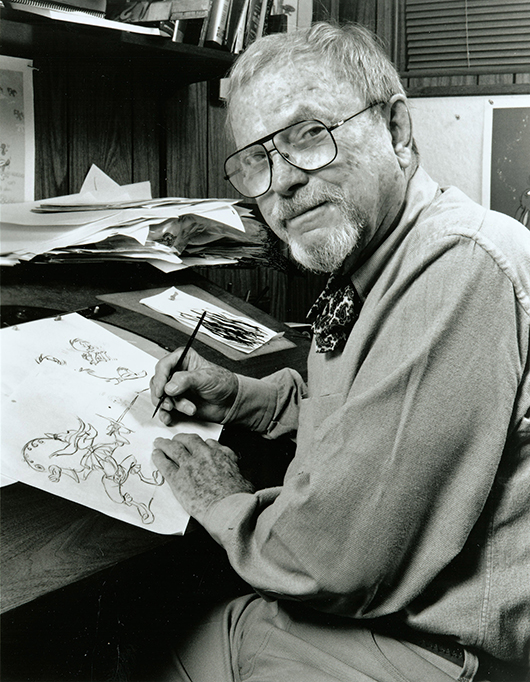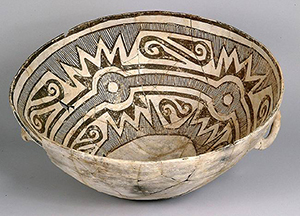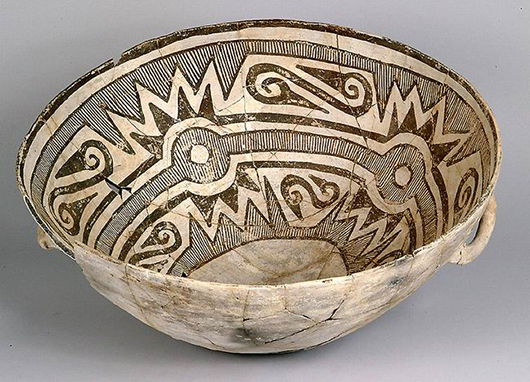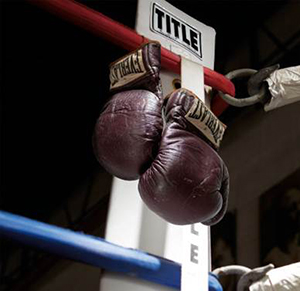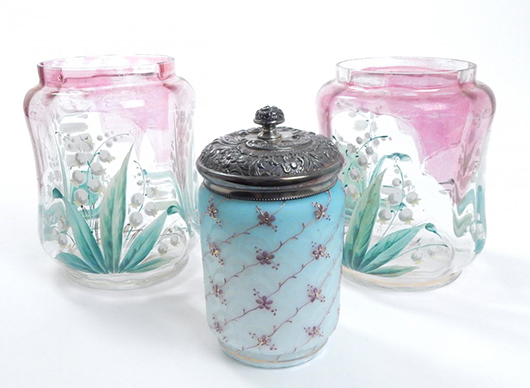
The most recognizable furniture icon from the Memphis Group may be Ettore Sottsass’s 1981 Carlton Room Divider, constructed of plastic laminate. The design perfectly illustrates the style’s vivid colors and defiance of conventional functionality. Private Collection, Courtesy Dixon Gallery and Gardens, Memphis, Tennessee PHILA., Pa. – In late 1980, Ettore Sottsass (1917-2007), a well-known designer and architect in Milan, Italy, gathered together a group of younger colleagues to brainstorm a new international design style. Eager to break with the soothing neutralities of the period, the twenty- and thirty-somethings came up with Memphis, a radical approach to design that was colorful, fanciful, and often geometric. Whether they loved it or hated, critics dissected and published the new designs, which soon received international recognition.
Why “Memphis”? No reference to the ancient Egyptian capital was intended. According to the accepted legend, Bob Dylan’s “Stuck Inside of Mobile with the Memphis Blues Again” from the classic Blonde on Blonde album was spinning on the turntable during that first meeting. The hip label with its links to American blues proved to be an attention-getter. The Memphis core group, which included Marco Zanini, Matteo Thun, Michele de Lucchi, and Martine Bedin, grew into a loose collection of around 25 designers who contributed fresh ideas to the periodic collections.
The Memphis designs utilized bold primary colors and inexpensive materials – plastic laminate was a favorite. Many were produced in multiples by Italian firms entrusted with their execution, but the designs often proved too intricate for true mass production. The aggressive furniture forms are best known, but a lot of ingenuity was expended on accessories such as lighting, glass vessels, and ceramics. Once cutting edge contemporary furnishings, the group’s material now stars in design sales, sought after by serious collectors.
A recent exhibition, Memphis Milano: 1980s Italian Design at the Dixon Gallery and Gardens in Memphis Tennessee, is a tribute to what one inspired collector can gather. Professional photographer Dennis Zanone was first exposed to the Memphis Group’s designs in a traveling exhibition that came to its namesake town in 1984. Intrigued by the look, he began to form a comprehensive collection of furniture and decorative arts by designers attached to the group. A compact exhibition catalogue of his excellent selections is available from the Dixon. And the collection continues to grow because, as he said in the local Memphis magazine, it “makes me smile every day.”
Curator Dana Holland-Beickert writes in the catalogue: “Memphis did not happen overnight; many of the designers had been working together on projects for two or three years. Others found their way into the fold by loose associations. The inspiration and catalyst of the design collective was Ettore Sottsass, Jr., already a super-star in the Italian design world, without whom Memphis would never have happened.”
The first collection of Memphis Group designs was displayed in Milan on September 8, 1981 at the small Arc ’74 showroom during the city’s prestigious Salone Internazionale dei Mobile that year. Holland-Beickert has written an excellent summary of the design group’s history in the catalogue and comments on that first show: “While each object reflected the style of its individual designer, the collection had a certain undefined unity – at the very basis, a sense of humor and wit, and a desire to reconnect with the human spirit.”
The second Memphis collection which appeared in 1982 included a ground-breaking approach to seating, the Bel Air chair by American designer Peter Shire, and also expanded the style into the decorative arts. Shire designed the electroplated nickel silver Anchorage teapot and the first glass vessels appeared. As with the furniture works, the designers’ glass creations were executed in a workshop, in this case Toso Vetri d’Arte in Murano near Venice.
That same year, Memphis pieces were first exhibited in the United States, and material from the first four Memphis collections toured many American museums in 1984-1985. Private and public collections on this side of the Atlantic began to acquire examples for display. Although the Memphis Group based in Milan eventually disbanded and drifted apart to pursue individual projects, hundreds of designs were produced between 1981 and 1988, at least in limited editions, and the style’s influence remains strong. The school’s pater familias Ettore Sottsass died in 2007, but the continuing careers of younger members can now be followed on their websites.
Collectors setting out to acquire the 1980s Memphis designs have much to choose from in the catalogues of auction companies in the United States and Europe. The Wright auction firm, based in Chicago, has long been a major source for important Italian design, including works by the Milan collective. The Carlton Room Divider, a 1981 Sottsass furniture icon, remains a sine qua non for any collection of the style. Although sometimes described as a “bookcase,” the overwhelming angularity and unity of the form defies placing objects on the shelves. Depending on condition, examples are available from around $5000 on up; one sold in 2010 at Wright for $18,750.
As the Sottsass divider illustrates, Memphis is a strong, distinctive style, like Gothic Revival in the 19th century. Accents – an occasional table, a shelf of vivid glass vessels, a grouping of geometric ceramics – spice up an interior, where an entire room filled with Memphis sculptural forms tends to become a museum. Yet there is such a feel-good element to the designs that – once started – the collector may be tempted to buy just one more object when a new catalogue appears.
On the appeal of the Memphis material, Richard Wright says, “The design influence of Ettore Sottsass is filtered through designers around the world. He was the guiding spirit behind it all. Sottsass and Memphis embodied a philosophy, more than just a style. I see a broader interest developing in Post-Modern design, so Memphis for me is one element in Post-Modernism.”
“From a collecting point of view, it’s important to understand that some of these Memphis Group pieces are still in production. It’s pretty easy to find out what is still in production and see the price points. It certainly helps to understand what is available today at what price. The ideal was to bring good design to all facets of your environment in the home. There are wonderful Memphis lighting elements that are not that expensive, there are small pieces – dishes, vases – all those things are quite approachable.”
Collectors now can add to their reference shelf Ettore Sottsass by Philippe Thome, a comprehensive study of the designer which was published in May 2014. The recent Memphis, Tennessee exhibition catalogue can be acquired from the museum at www.dixon.org.
# # #
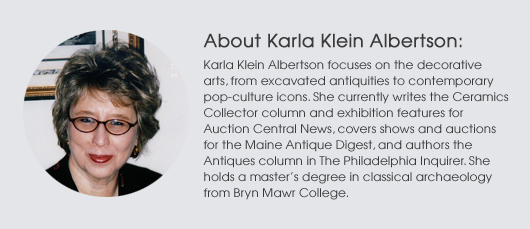
ADDITIONAL IMAGES OF NOTE

The most recognizable furniture icon from the Memphis Group may be Ettore Sottsass’s 1981 Carlton Room Divider, constructed of plastic laminate. The design perfectly illustrates the style’s vivid colors and defiance of conventional functionality. Private Collection, Courtesy Dixon Gallery and Gardens, Memphis, Tennessee
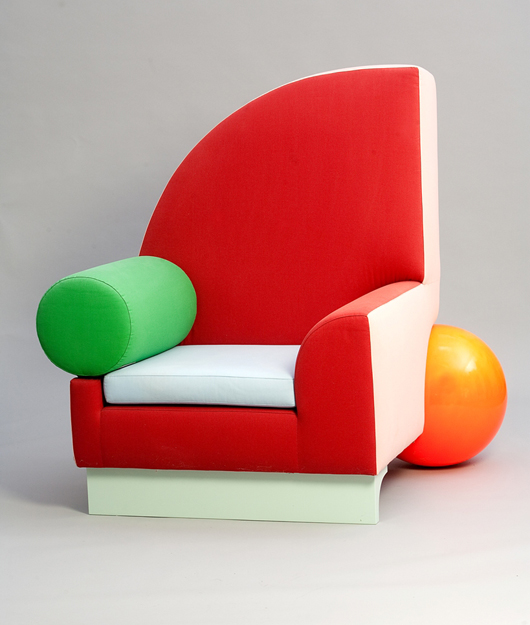

Sottsass designed colorful glass vessels which were produced at a glassworks in Murano, Italy for the Memphis Group. Eye-catching when displayed as a group, this quartet of 1981 vases brought $10,000 in March. Courtesy Wright Auctions 
The Memphis Group experiments with lighting can be a whimsical addition to any interior. Founding member Martine Bedin (b. 1957) created the Olympia table lamp in 1985; an example brought $1750 in 2010. Courtesy Wright Auctions 
Among the most affordable Memphis creations are the ceramic designs of Matteo Thun, Marco Zanini, Masanori Umeda, Martine Bedin, and others. More table sculpture than teapot, this 1982 vessel by Thun brought $563 in a 2012 Mass Modern auction. Courtesy Wright Auctions 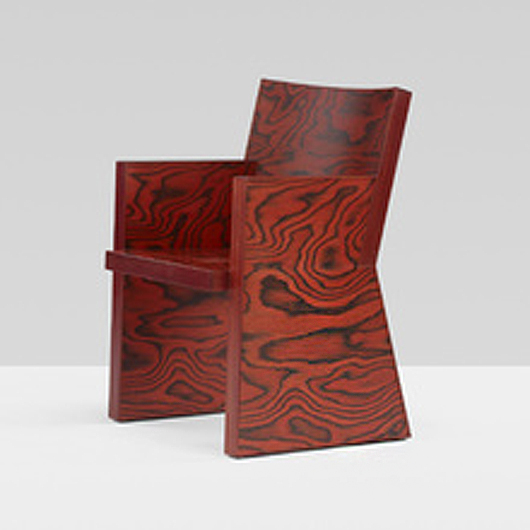
The “In Praise of Epicurus” chair, a limited edition Sottsass design produced in 1987, is a desirable addition to any Memphis collection. This example – numbered “18” – brought $17,500 last year. Courtesy Wright Auctions 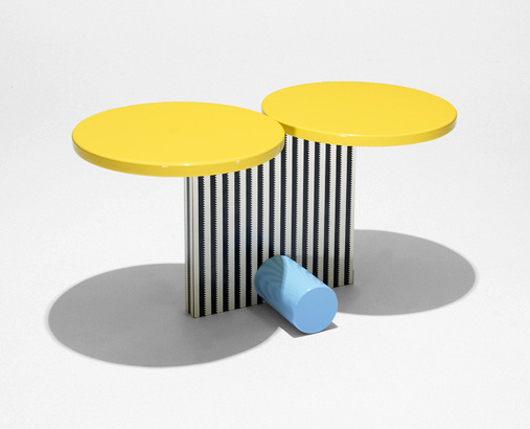
Small accent pieces by Memphis designers brighten interiors with a splash of color. Michele de Lucchi (b. 1951), another founding member of the style group, created the Polar occasional table in 1984; a labeled example, made in Milan, brought $2625 several years ago. Courtesy Wright Auctions



